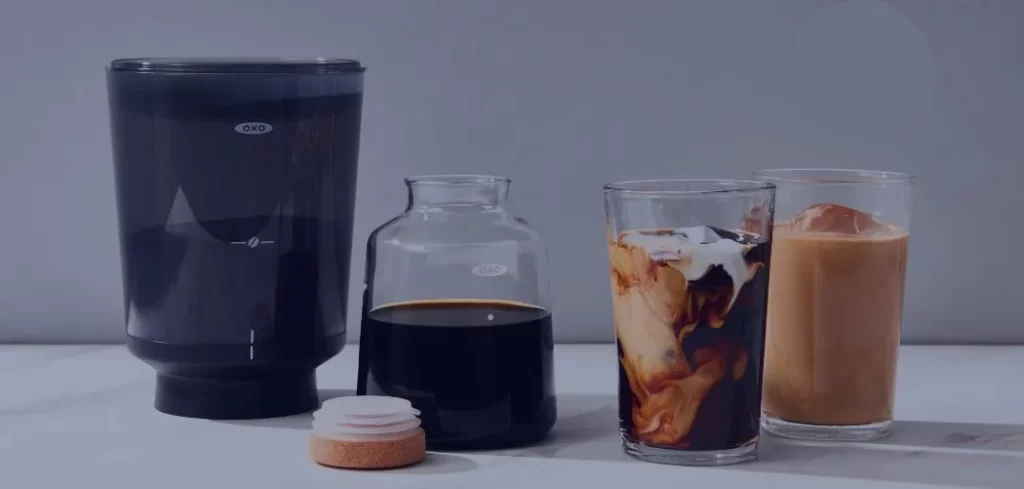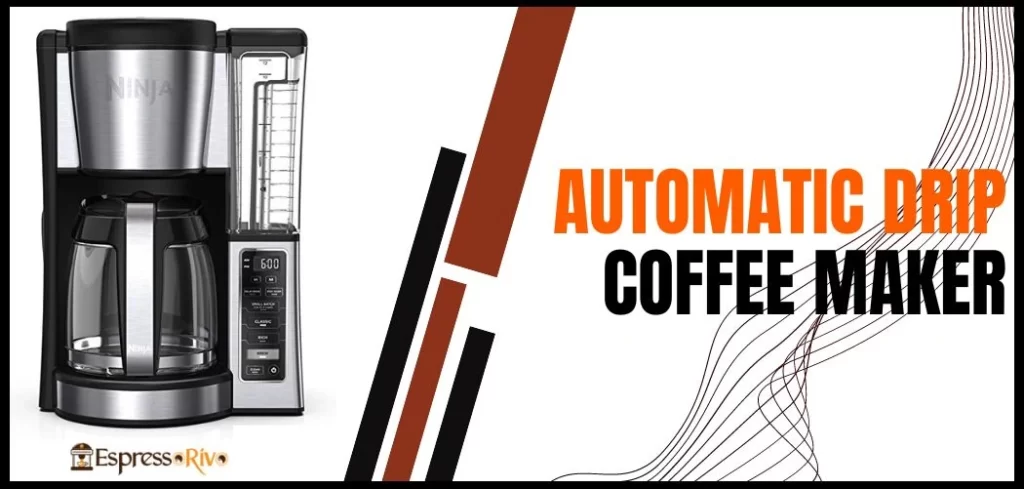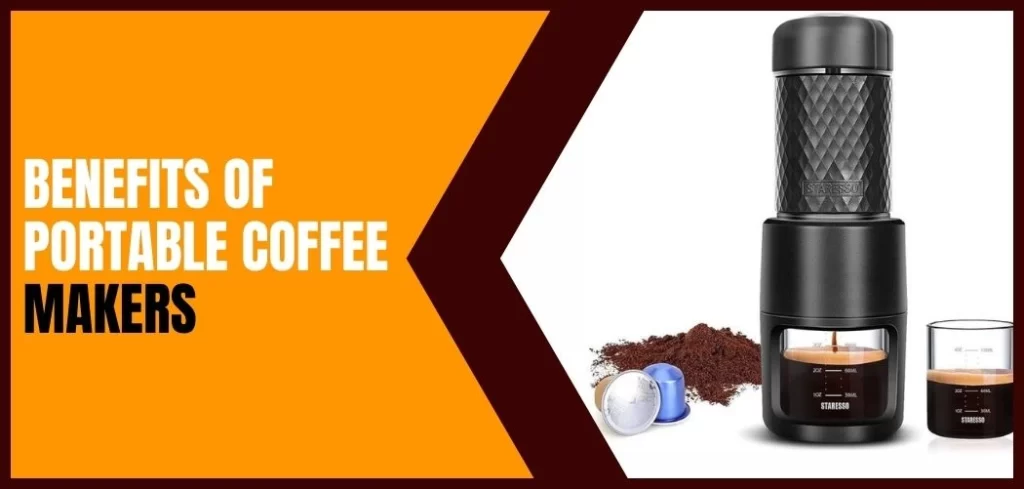If you’re a coffee lover, you’re probably already familiar with cold-brew coffee. Unlike traditional hot brewed coffee, cold brew is made by steeping coffee grounds in cold water for an extended period, usually 12-24 hours. This slow process produces a smooth, less acidic coffee concentrate that can be diluted with water or milk and enjoyed over ice.
But did you know that not all cold brew coffee makers are created equal? There are actually several different types of cold brew coffee makers on the market, each with its own unique features and benefits. In this article, we’ll explore the different types of cold brew coffee makers available and how they work, so you can decide which one is right for you.
First, let’s take a closer look at the advantages of cold brew coffee. Because cold brew coffee is made with cold water, it contains fewer bitter compounds and acids than hot brewed coffee. This results in a sweeter, smoother coffee that’s easier on the stomach and less likely to cause heartburn or acid reflux. Plus, cold brew coffee can be stored in the refrigerator for up to two weeks, making it a convenient and cost-effective way to enjoy iced coffee at home.
So, whether you’re a cold brew coffee aficionado or a newcomer to the trend, keep reading to discover the different types of cold brew coffee makers and how they can help you create the perfect cup of cold brew coffee.
Types of Cold Brew Coffee Makers
When it comes to cold brew coffee makers, there are three main types: immersion, slow drip, and cold drip. Each type has its own unique features and brewing process, which can affect the taste and strength of the resulting cold-brew coffee. Let’s take a closer look at each type:
1. Immersion Method
The immersion method is the most common and straightforward way to make cold-brew coffee. With this method, coffee grounds are steeped in cold water for 12-24 hours, allowing the coffee to infuse into the water and create a rich, full-bodied concentrate.
Immersion cold brew coffee makers are typically made with a large container or pitcher, a filter, and a lid. The coffee grounds are placed in the filter and immersed in the cold water, then covered and left to steep. Once the coffee is brewed, the concentrate is drained into another container, leaving behind the used coffee grounds.
Some examples of immersion cold brew coffee makers include the Hario Mizudashi, the Toddy Cold Brew System, and the OXO coffee maker. Immersion coffee makers are generally easy to use and require minimal maintenance, making them a popular choice for home use.
Pros
- Easy to use
- Minimal maintenance required
- Can brew large batches at once
Cons
- Longer brewing time required
- This may result in a stronger, more bitter taste
2. Slow Drip Method
The slow drip method, also known as Kyoto-style or Dutch-style, involves a slower, more controlled brewing process. With this method, cold water is slowly dripped through a bed of coffee grounds, allowing the coffee to extract gradually and resulting in a smooth, well-balanced flavor.
Slow-drip cold brew coffee makers are typically made with a tower or dripper that has several levels or chambers. The coffee grounds are placed in a filter at the top of the tower, and the cold water is dripped slowly through the grounds and into a carafe at the bottom. The process can take anywhere from 3-12 hours, depending on the desired strength of the coffee.
Some examples of slow-drip cold brew coffee makers include the Yama Glass Cold Drip Maker, the Tiamo Cold Drip Brewer, and the Hario Pota Slow Coffee Maker. Slow-drip coffee makers can produce a more nuanced and complex flavor profile, but they require more attention and skill to use properly.
Pros
- Smooth, well-balanced flavor
- Can produce more nuanced flavor profiles
- The more visually appealing brewing process
Cons
- Longer brewing time required
- More attention and skill required
- Higher cost compared to the immersion method
3. Cold Drip Method
The cold drip method, also known as the Kyoto style or Dutch style, is similar to the slow drip method, but it uses a different type of brewer. With this method, the coffee grounds are placed in a cylinder or carafe with small holes at the bottom, and the cold water is dripped through the grounds and into another container.
Cold drip coffee makers typically have a unique and eye-catching design, with a tower or pyramid shape that showcases the brewing process. The process can take anywhere from 3-12 hours, depending on the desired strength of the coffee.
Some examples of cold drip coffee makers include the Yama Glass Tower, the Dutch Lab Steampunk, and the Hario Water Dripper. Cold drip coffee makers can produce smooth and flavorful coffee, but they require more attention and skill to use properly, and they can be more expensive than other types of cold brew coffee makers.
Pros
- Smooth, flavorful coffee
- Eye-catching design and brewing process
How Cold Brew Coffee Makers Work
No matter which type of cold brew coffee maker you choose, the basic process is the same: coffee grounds are steeped in cold water for an extended period of time, resulting in a smooth, low-acid coffee concentrate. However, the specifics of how each type of coffee maker works can vary.
1. Immersion Method
With immersion cold brew coffee makers, the coffee grounds are steeped directly in the water, allowing the coffee to infuse into the water and create a concentrate. The length of time the coffee is steeped can vary, but it typically takes between 12-24 hours. Once the brewing is complete, the concentrate is drained through a filter and can be diluted with water or milk to create a refreshing and flavorful cold-brew coffee.
2. Slow Drip Method
With slow-drip cold brew coffee makers, the water is slowly dripped through the coffee grounds, allowing the coffee to extract gradually and create a smooth, well-balanced flavor. The coffee grounds are placed in a filter at the top of the tower or dripper, and the cold water is dripped slowly through the grounds and into a carafe at the bottom. The process can take anywhere from 3-12 hours, depending on the desired strength of the coffee.
3. Cold Drip Method
With cold drip coffee makers, the coffee grounds are placed in a cylinder or carafe with small holes at the bottom, and the cold water is dripped through the grounds and into another container. The process can take anywhere from 3-12 hours, depending on the desired strength of the coffee. Cold drip coffee makers can produce smooth and flavorful coffee, but they require more attention and skill to use properly.
Regardless of the type of cold brew coffee maker, the key to a great-tasting cold brew coffee is using high-quality coffee beans and a consistent grind size. The grind size should be coarse, similar to the texture of raw sugar, to prevent over-extraction and bitterness.
In addition to the brewing process, the storage and serving of cold brew coffee can also affect its flavor. Cold brew coffee concentrate should be stored in an airtight container in the refrigerator and can be diluted with water or milk before serving. Cold brew coffee can also be enjoyed over ice or blended with ice for a refreshing coffee drink.
Cold brew coffee makers offer a unique and delicious way to enjoy coffee, with a smooth and low-acid flavor that can be customized to your taste. By understanding the different types of cold brew coffee makers and how they work, you can choose the best one for your needs and enjoy a delicious and refreshing cold brew coffee anytime.
Factors to Consider When Choosing a Cold Brew Coffee Maker
With so many different types and brands of cold brew coffee makers on the market, it can be difficult to choose the right one for your needs. Here are some factors to consider when making your selection:

Type of Cold Brew Coffee Maker
As we discussed earlier, there are several different types of cold brew coffee makers, each with its own unique brewing process. Immersion cold brew coffee makers are generally the simplest and most affordable, while slow drip and cold drip coffee makers offer more control over the brewing process but can be more expensive and time-consuming to use. Consider your budget, time constraints, and personal preferences when choosing the type of cold brew coffee maker that will work best for you.
Capacity
Another important factor to consider when choosing a cold brew coffee maker is the capacity. Some models are designed to brew just a few cups at a time, while others can make up to a gallon or more of cold brew coffee concentrate. Think about how much coffee you typically consume and how often you want to brew a new batch, and choose a coffee maker that can accommodate your needs.
Ease of Use
Some cold-brew coffee makers are more user-friendly than others. If you’re new to cold brew coffee or don’t want to spend a lot of time fussing with your coffee maker, look for a model that is easy to use and requires minimal setup and maintenance. On the other hand, if you’re a seasoned coffee aficionado who wants full control over the brewing process, a more complex coffee maker may be the right choice for you.
Price
Like any kitchen appliance, cold brew coffee makers can vary widely in price. You can find basic immersion cold brew coffee makers for under $20, while high-end slow-drip and cold-drip models can cost hundreds of dollars. Consider your budget and how much you’re willing to spend on a coffee maker, but also keep in mind that a more expensive model may offer more features and better-quality construction.
Brand and Customer Reviews
Finally, it’s always a good idea to do some research on the brand and read customer reviews before making a purchase. Look for a reputable brand with a track record of producing high-quality coffee makers, and read reviews from other coffee lovers to get an idea of the pros and cons of each model. Keep in mind that no coffee maker is perfect, but a model with overwhelmingly positive reviews is a good sign that it’s a solid choice.
Considering these factors and doing your research, you can choose a cold brew coffee maker that will fit your needs and help you enjoy delicious and refreshing cold brew coffee anytime.
Conclusion
Cold brew coffee has become increasingly popular in recent years, and for good reason. This method of brewing coffee produces a smooth, flavorful, and less acidic beverage that is perfect for hot summer days or as a refreshing pick-me-up any time of year. With the right cold brew coffee maker, you can easily make your own cold brew coffee at home and enjoy all the benefits of this delicious beverage.
In this article, we’ve explored the different types of cold brew coffee makers and how they work. From immersion to slow drip to cold drip coffee makers, there are many options to choose from, each with its own unique brewing process and advantages. We’ve also discussed the factors to consider when choosing a cold brew coffee maker, including type, capacity, ease of use, price, and brand.
No matter which cold brew coffee maker you choose, the key to a great cup of cold brew coffee is using high-quality coffee beans and following the right brewing process. With a little practice and experimentation, you can find the perfect recipe for your taste buds and enjoy delicious cold brew coffee anytime.
So why not give it a try? With a cold brew coffee maker and a few simple ingredients, you can create a refreshing and delicious beverage that will impress your friends and family and keep you cool and caffeinated all summer long.
Ronsil
Meet Ronsil, the master barista behind EspressoRivo. With years of experience in the coffee industry, he brings a wealth of knowledge and passion to the table. As the owner of a successful coffee shop, Ronsil is a sought-after adviser in the field. His expertise and love for the craft shines through in every cup he serves. We are honored to have him as part of our team at EspressoRivo





